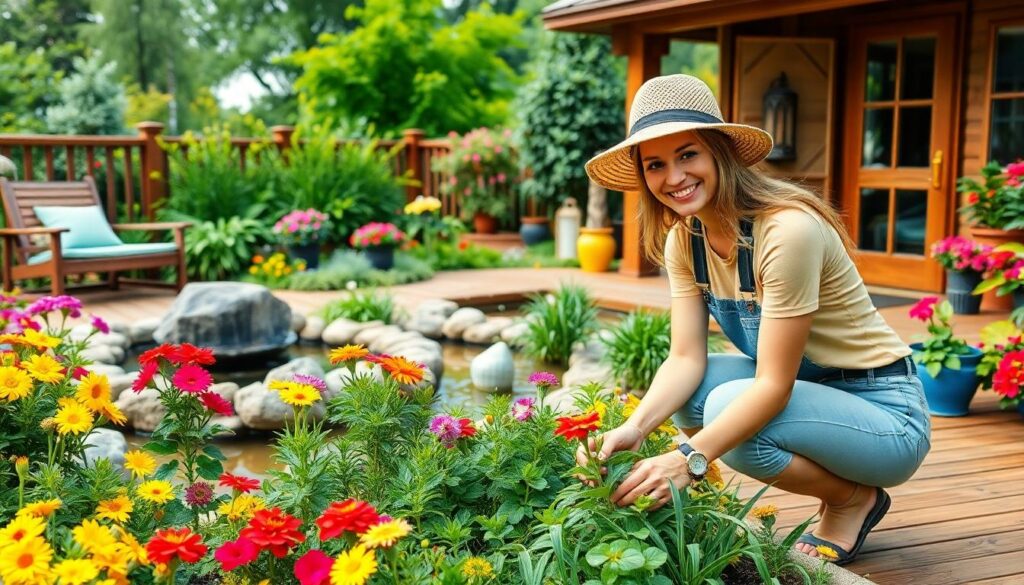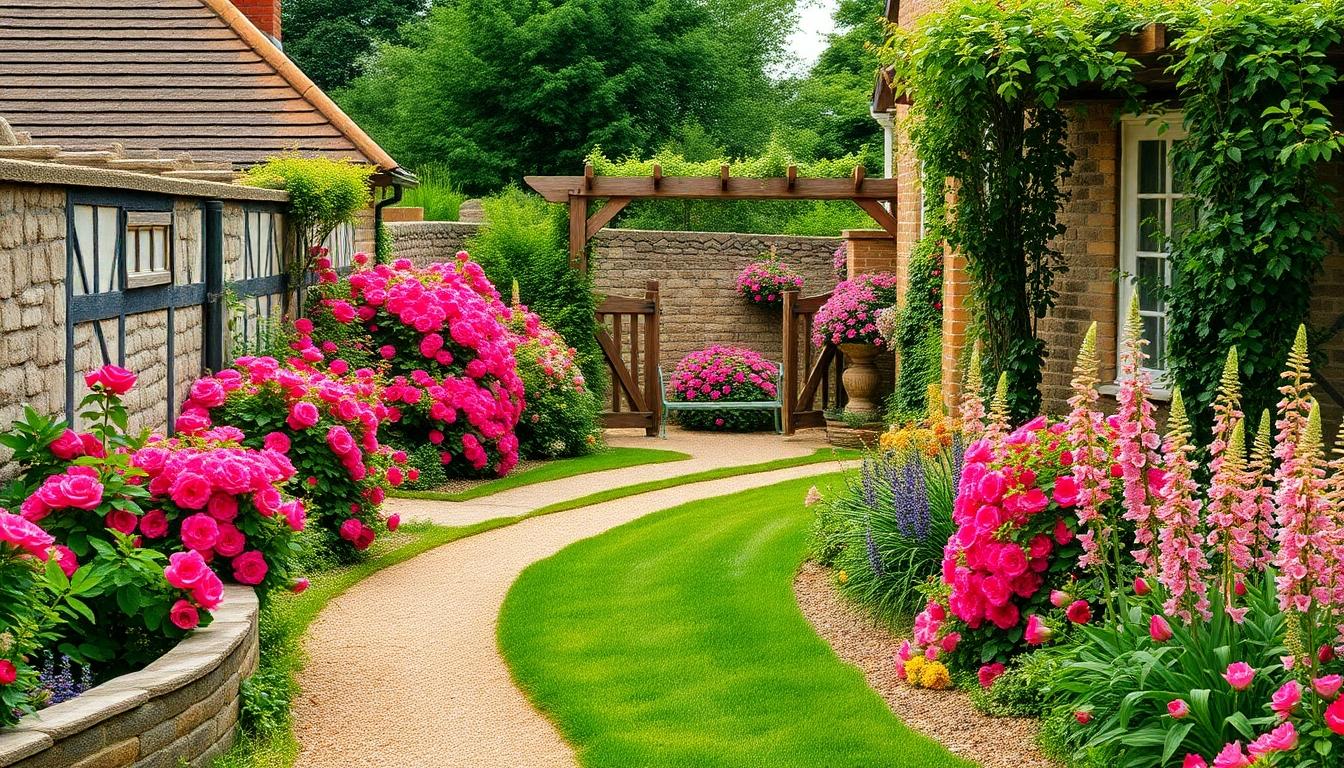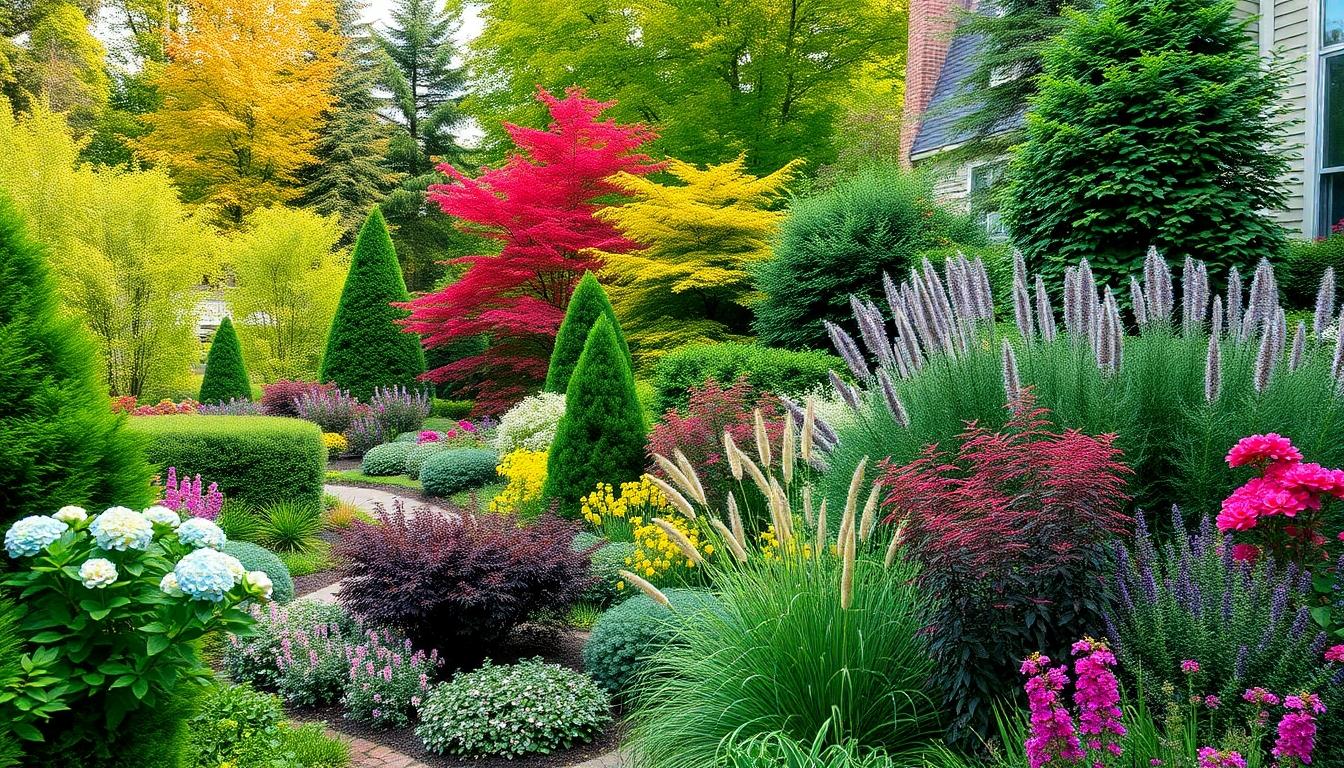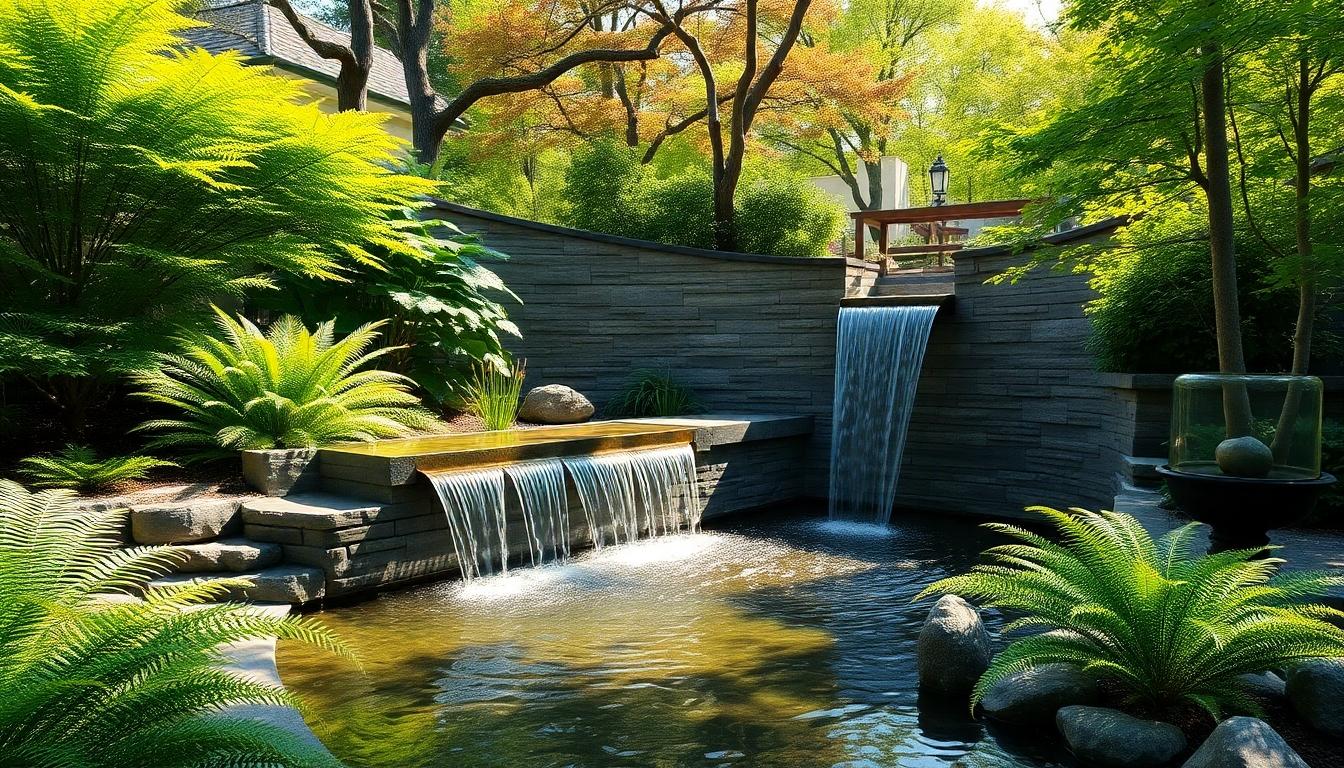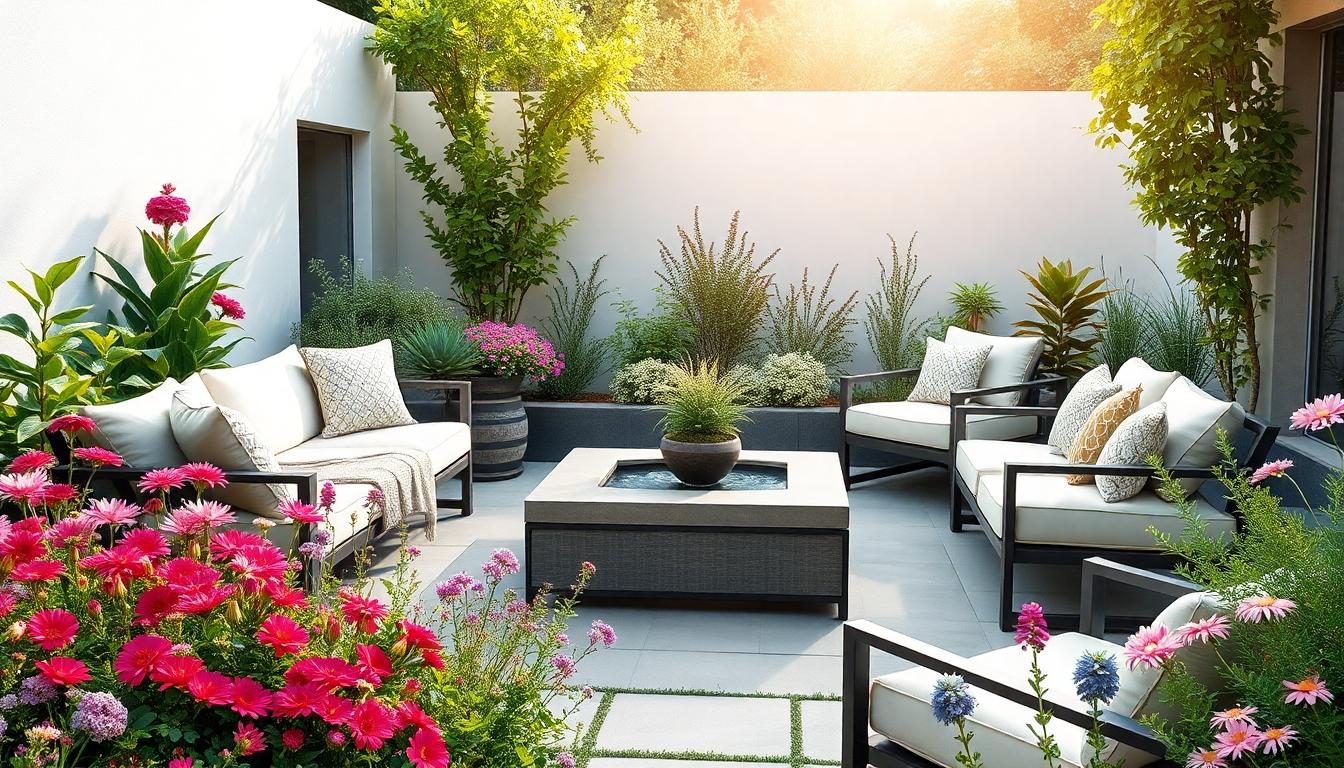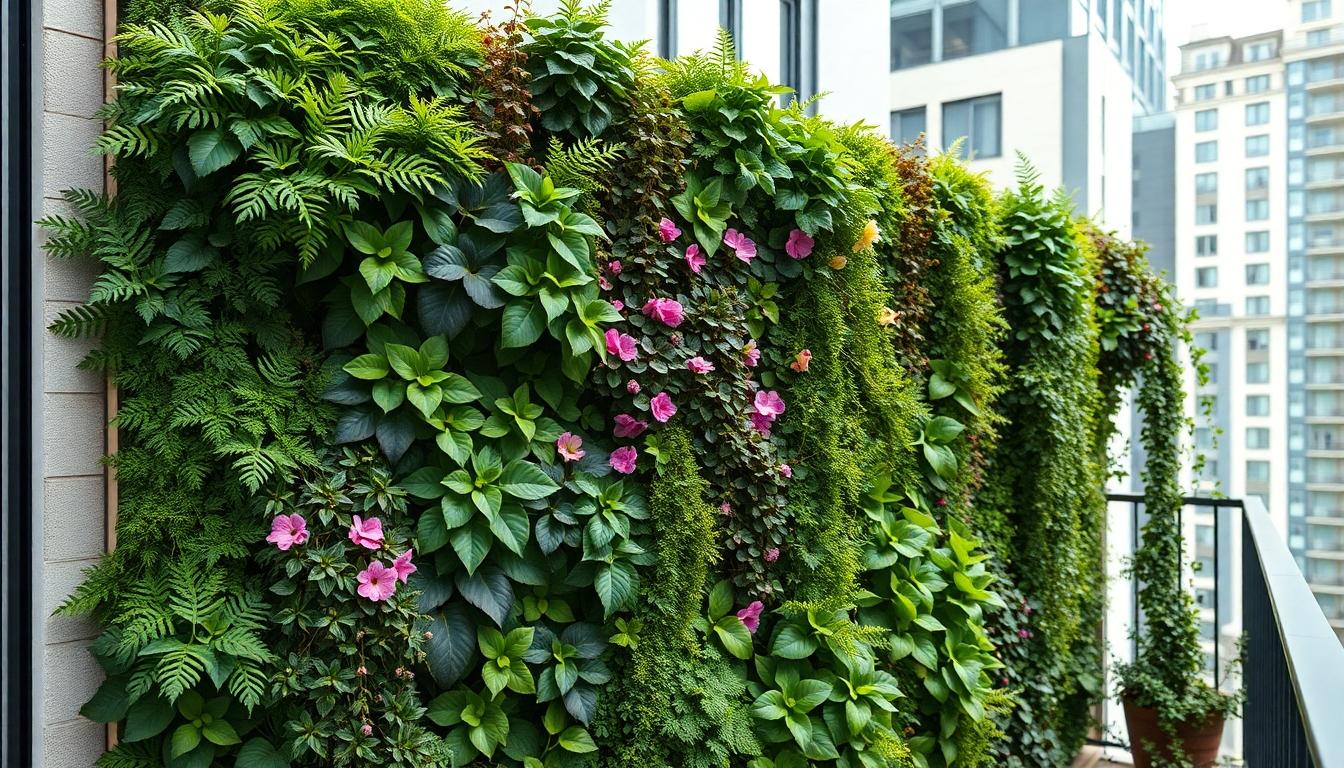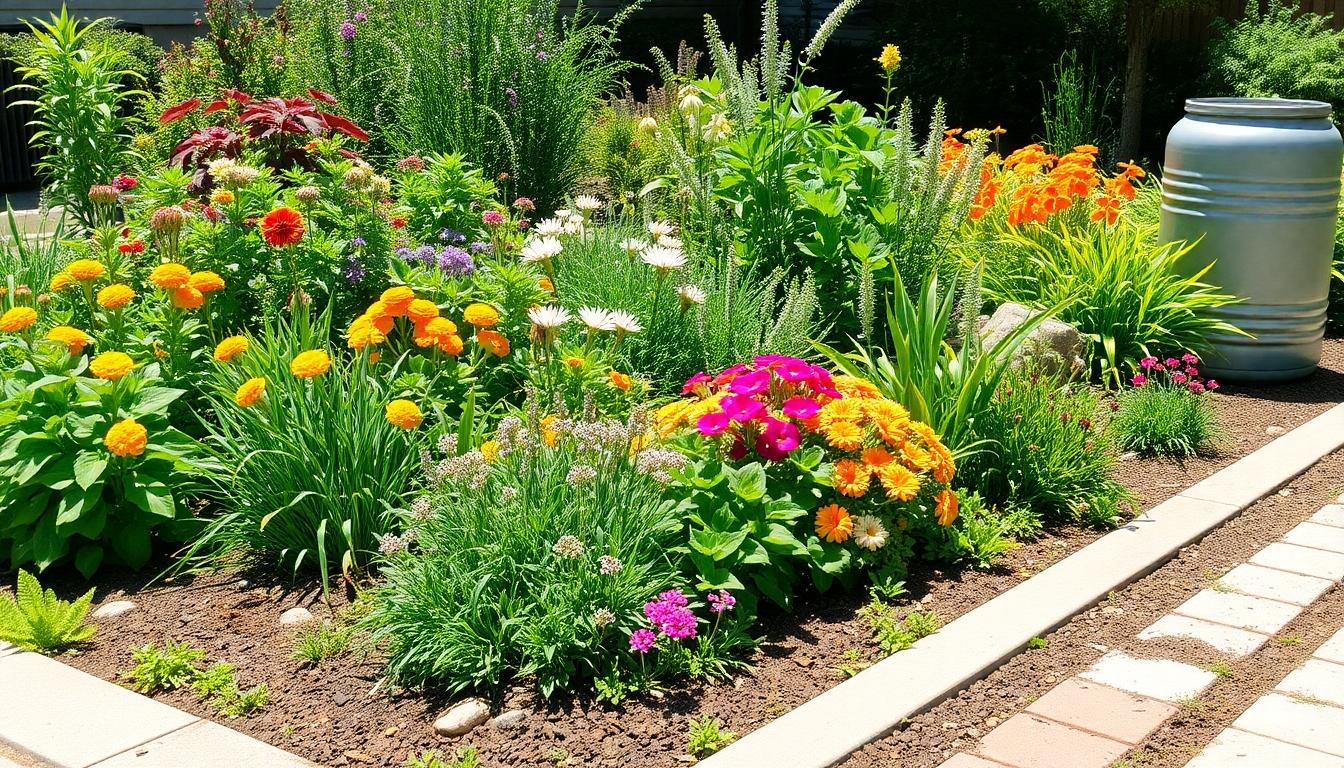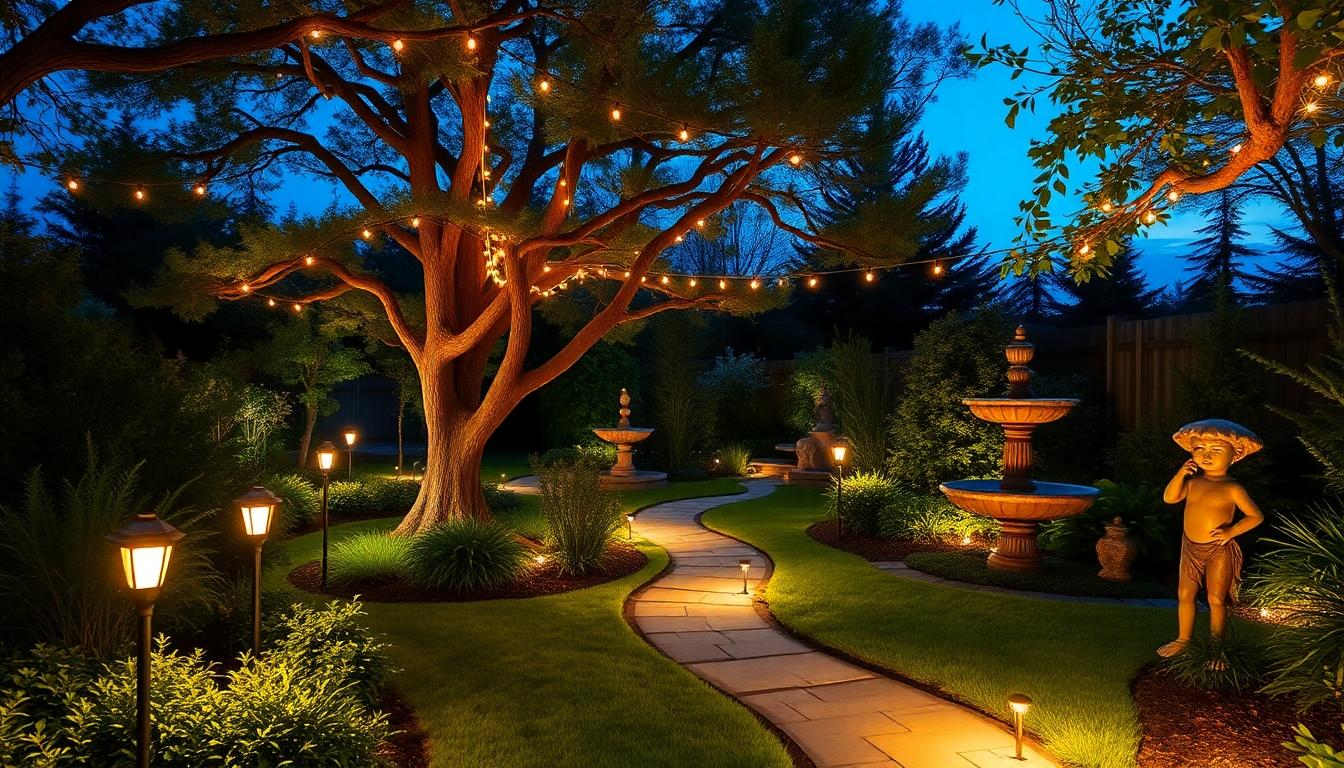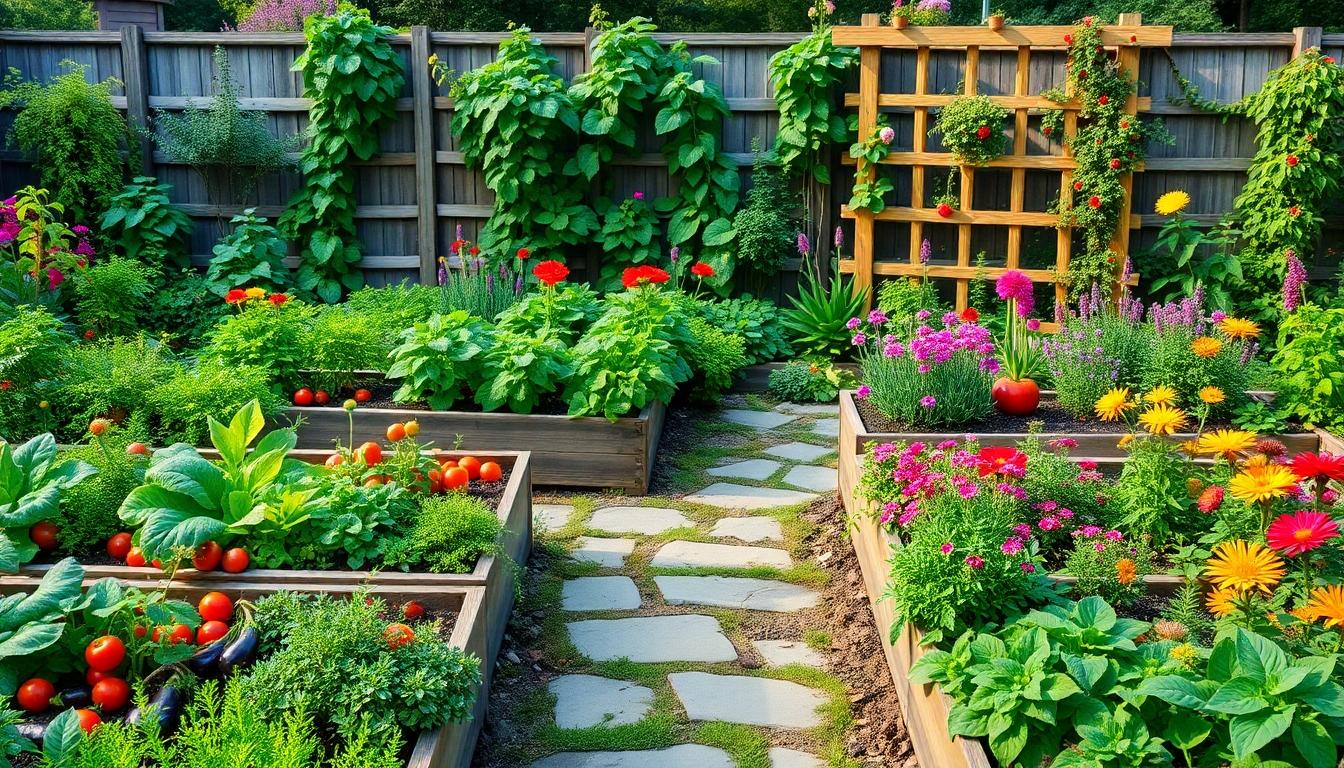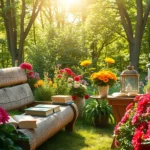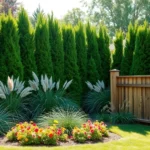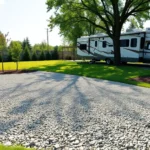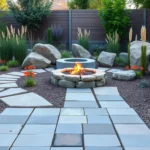Ready to transform your outdoor space but not sure where to begin? We’ve gathered the most inspiring garden design ideas to help you create a stunning industry that reflects your personal style while maximizing your space’s potential.
Whether you’re working with a sprawling backyard or a cozy balcony, thoughtful garden design can turn any outdoor area into a tranquil retreat. From elegant formal gardens to wild cottage-inspired spaces, the right combination of plants, hardscaping, and decorative elements will elevate your garden from ordinary to extraordinary. With our expert tips and creative approaches, you’ll discover how to balance aesthetics with functionality for a garden that’s both beautiful and practical.
10 Stunning Garden Design Ideas to Transform Your Outdoor Space
1. Create a Focal Point with Water Features
Water features instantly elevate any garden design by adding visual interest and soothing sounds. A contemporary fountain, natural pond, or cascading waterfall can serve as the centerpiece of your outdoor space. Installing a water feature doesn’t need to be complicated—even small, self-contained options create amazing impact with minimal maintenance. Many homeowners find that the sound of flowing water masks unwanted noise from nearby streets or neighbors, creating a more peaceful environment.
2. Establish Outdoor Rooms with Strategic Planting
Dividing your garden into distinct “rooms” creates an intimate feel while making even modest spaces appear larger. Tall ornamental grasses, carefully positioned shrubs, or trellises with climbing plants function as natural dividers to define different areas. These living walls can separate dining spots from relaxation zones or create secluded reading nooks within your garden. Strategic planting allows guests to discover your garden gradually rather than seeing everything at once.
3. Incorporate Vertical Gardens for Small Spaces
Vertical gardens maximize limited square footage by extending your planting area upward. Wall-mounted planters, hanging baskets, and specialized vertical garden systems turn ordinary walls into lush, living tapestries. Living walls work particularly well in urban settings where ground space is at a premium. Plants like succulents, herbs, and trailing varieties thrive in vertical configurations and require minimal soil depth.
4. Design with Year-Round Interest in Mind
Gardens that look spectacular in every season incorporate plants with varied blooming periods, interesting foliage, and winter structure. Evergreen shrubs provide constant structure while deciduous trees offer changing displays throughout the year. Spring bulbs, summer perennials, fall foliage, and winter berries ensure your garden remains captivating regardless of the calendar date. Adding elements like ornamental bark, architectural seed heads, and interesting branch structures maintains visual interest during dormant months.
5. Integrate Smart Lighting Answers
Thoughtful garden lighting extends the usability of your outdoor space well into the evening hours. Solar-powered path lights, strategically placed spotlights, and string lights draped through trees create magical nighttime ambiance. Modern lighting systems can be controlled via smartphone apps, allowing you to adjust brightness and color temperature with a tap. Proper illumination highlights architectural features, improves safety along pathways, and transforms your garden into an enchanting nighttime retreat.
6. Embrace Sustainable Practices with Rain Gardens
Rain gardens serve both aesthetic and ecological purposes by collecting runoff and reducing erosion. These specially designed planted depressions capture rainwater from roofs, driveways, and other hard surfaces. Native wetland plants in rain gardens filter pollutants while creating habitat for beneficial insects and wildlife. Homeowners in areas with heavy rainfall particularly benefit from these sustainable features that turn potential flooding problems into beautiful garden assets.
7. Incorporate Edible Landscaping Elements
Blending ornamental and edible plants creates gardens that are both beautiful and productive. Colorful Swiss chard, purple cabbage, and feathery dill integrate seamlessly with traditional flowering plants. Fruit trees provide spring blossoms, summer shade, and autumn harvests. Edible landscaping allows you to enjoy fresh produce while maintaining an attractive outdoor space. Many culinary herbs like rosemary, thyme, and lavender offer amazing fragrance while doubling as handsome ornamental plants.
8. Design Thoughtful Hardscaping Elements
Quality hardscaping forms the backbone of exceptional garden design. Natural stone pathways, wooden decks, and brick patios provide structure and usability throughout the seasons. Materials should complement your home’s architecture while reflecting the overall garden style. Permeable paving options allow water to penetrate the soil rather than contributing to runoff. Well-designed hardscaping elements direct movement through the space while creating destinations where people naturally want to gather.
9. Add Drama with Architectural Plants
Statement plants with bold forms create instant impact in garden designs. Plants with distinctive shapes like agaves, phormiums, and ornamental grasses act as living sculptures. These architectural specimens often require minimal maintenance while providing year-round visual interest. Placing them strategically at garden entrances, near seating areas, or as backdrop plants maximizes their dramatic effect. Just a few well-chosen architectural plants can transform an ordinary garden into a designer industry.
10. Create Wildlife-Friendly Habitats
Gardens designed with wildlife in mind buzz with activity and ecological balance. Bird-attracting shrubs, butterfly-friendly perennials, and pollinator gardens support local ecosystems while adding movement and interest. Simple additions like bird baths, insect hotels, and native plant communities make your garden part of the larger environmental industry. Wildlife-friendly gardens typically require fewer pesticides and interventions as natural predators help maintain pest populations. The resulting biodiversity brings your garden to life with constant movement, sound, and seasonal changes.
Creating a Themed Garden: From Cottage to Contemporary
Themed gardens offer a cohesive design approach that can transform ordinary outdoor spaces into immersive environments with distinct personality and purpose. Let’s explore some popular garden themes that can inspire your next landscaping project.
English Cottage Garden Charm
English cottage gardens captivate with their informal, romantic aesthetic and abundant plantings. These gardens feature densely packed ornamental and edible species arranged in a seemingly random yet harmonious pattern. Low fences or traditional stone walls typically define the boundaries, creating an intimate, enclosed feeling that’s quintessentially cottage-style. Curving pathways made of natural materials like gravel or wood chips meander through the planting beds, encouraging exploration and discovery. Weathered structures such as arbors, trellises, and rustic gates add architectural interest while supporting climbing roses and vines. For authentic cottage garden appeal, cluster roses, foxgloves, hollyhocks, and mixed perennials in generous groupings to achieve that cherished “lived-in” look that makes these gardens so endearing.
Mediterranean Garden Elements
Mediterranean gardens excel in hot, dry climates by prioritizing drought-resistant plants and strategic hardscaping elements. Lavender, olive trees, cypress, and fragrant herbs form the backbone of these sun-loving gardens. Terracotta pots and planters scattered throughout the space add warmth and traditional character while providing flexible planting options. Gravel paths not only complement the aesthetic but also allow water permeation and minimize maintenance. Stone or stucco walls in warm earth tones create structure and authenticity while offering protection from harsh sun and winds. Shaded seating areas become essential retreats during hot weather, often situated under pergolas draped with wisteria or grapevines. Aromatic herbs like rosemary, thyme, and oregano introduce sensory elements that transport visitors to Mediterranean hillsides with every gentle breeze.
Japanese Zen Garden Features
Japanese Zen gardens embody minimalism and tranquility, offering contemplative spaces designed for meditation and reflection. These gardens center around carefully raked gravel or sand that symbolizes water or ocean waves, creating rippling patterns that change with the light. Strategically placed rocks represent mountains or islands, positioned according to principles that consider size, shape, and relationship to surrounding elements. Vegetation remains purposefully sparse, typically featuring moss, carefully pruned shrubs, and occasionally a single perfect maple or pine as a focal point. Bamboo fencing provides natural boundaries while stone lanterns cast gentle light and serve as artistic focal points. Water elements, whether actual ponds or symbolic representations, introduce the soothing sound element that completes the multisensory experience. These gardens require meticulous maintenance but reward with unparalleled serenity and visual harmony.
Strategic Plant Selection for Year-Round Interest
Creating a garden that looks beautiful in every season requires thoughtful planning and strategic plant choices. By selecting plants with different peak seasons of interest, you’ll enjoy a ever-changing industry that evolves throughout the year.
Structural Backbone
The foundation of any year-round garden begins with trees and shrubs that provide consistent structure. These woody plants serve as anchors in your industry design, offering visual interest across multiple seasons. Choose varieties that deliver spring blossoms followed by attractive autumn foliage for maximum impact. Evergreen selections like Arborvitae and Boxwood are particularly valuable as they maintain their form and color throughout winter when many other plants go dormant. These versatile plants can be shaped to complement various garden styles while providing reliable structure when deciduous plants lose their leaves.
Seasonal Blooming Schedules
Spring gardens come alive with early bloomers such as rhododendron, winter aconites, and daphne, providing welcome color after winter’s dormancy. These plants signal the beginning of the growing season and create focal points as the garden awakens. Summer displays benefit from long-blooming perennials including hydrangeas and Joe Pye weed, which provide consistent color during the peak growing months. Autumn landscapes transform with the vibrant foliage of Burning Bush and Buttonbush, creating dramatic color shifts as temperatures cool. Winter interest doesn’t have to be sacrificed in your garden design—evergreen trees, berry-producing bushes, and ornamental grasses with persistent seed heads maintain visual appeal during the coldest months.
Combining Textures and Heights
Successful garden designs incorporate varied textures that create visual interest even when plants aren’t flowering. Mix fine-textured plants like boxwood with broader-leaved varieties such as hostas to create contrast that draws the eye. Height variation establishes important visual layers in the garden, with trees forming the upper canopy, shrubs creating the middle layer, and perennials filling the ground plane. Plants with different growth habits contribute to ever-changing garden compositions—pair upright varieties with spreading types to create movement and dimension throughout your planting beds. These thoughtful combinations ensure your garden maintains visual interest regardless of what’s currently in bloom.
Incorporating Water Features into Your Garden Design
Water features add a ever-changing element to any garden design, creating both visual interest and a soothing atmosphere through the gentle sounds of flowing water. Integrating these elements can transform an ordinary garden into a tranquil retreat, regardless of your space limitations.
Japanese-Inspired Water Features
Japanese-inspired water features bring an authentic sense of zen to your outdoor space. Stone bowl water features, modeled after traditional Japanese tsukubai, create a serene focal point that invites contemplation. These designs work best when surrounded by complementary plants like acers and ferns, improving the peaceful setting. Local materials can be incorporated to give your water feature a more natural connection to its surroundings while maintaining authentic Japanese design principles.
Stone wall water features offer another elegant option for garden designers seeking tranquility. Water cascading down textured stone creates a mesmerizing visual and audio experience that combines the solid permanence of stone with the fluid movement of water. This combination works particularly well in gardens that already feature stone elements, creating a cohesive design language throughout the space.
Boulder water features provide a more naturalistic approach that mimics streams found in nature. Large boulders combined with carefully arranged river rocks create unique flow patterns that catch both light and attention. These features can be designed to appear as though they’ve always been part of your industry, with water emerging naturally from between rocks rather than from obvious human-made sources.
Small-Space Fountain Ideas
Solar-powered fountains provide an excellent solution for compact gardens where space and access to electricity might be limited. These energy-efficient options harness sunlight to power gentle water movement, creating soothing sounds without demanding important square footage. Many solar fountains require no wiring or complicated installation, making them perfect for DIY gardeners with limited space.
Miniature ponds with integrated fountains deliver the complete water garden experience in a fraction of the space. These compact water features can be as small as a large container yet still incorporate the soothing qualities of larger ponds. Table-top versions can even bring the tranquility of moving water to patios, decks, or balconies where ground space isn’t available for traditional water features.
Natural Pond Construction Tips
Native plants play a crucial role in successful natural pond construction. Incorporating local aquatic vegetation helps maintain ecological balance while reducing ongoing maintenance requirements. These plants are already adapted to your climate and will support local wildlife, creating a self-sustaining mini-network in your garden that requires less intervention than ponds with non-native species.
Natural liners serve as the foundation for any successful pond installation. We recommend selecting durable, non-toxic options specifically designed to withstand environmental conditions while supporting healthy pond life. Quality liners prevent water seepage while creating a safe environment for fish, beneficial insects, and amphibians that might make your pond their home.
Creating a balanced network represents the ultimate goal of natural pond construction. Proper water circulation prevents stagnation and mosquito breeding while supporting beneficial organisms. A well-designed pond incorporates various depths, plant zones, and hiding spots for aquatic creatures, establishing a self-regulating system that becomes an captivating focal point in your garden design.
Outdoor Living Areas: Blending Function and Beauty
The 2025 garden design industry emphasizes creating outdoor spaces that seamlessly merge functionality with aesthetic appeal. Today’s trends prioritize eco-friendly designs featuring refined color palettes of soft neutrals and warm grays, accented with bold terra cotta and deep blues to create visually cohesive environments. No-mow alternatives like clover lawns, native meadows, and xeriscapes significantly reduce maintenance requirements while supporting local biodiversity. Wellness-focused areas now incorporate soothing water features, fragrant plantings, and soft lighting schemes that transform gardens into personal retreats.
Garden Room Concepts
Multi-functional spaces dominate modern garden design, with designers converting previously underutilized areas such as driveways and rooftops into plant-rich habitats or social zones. Native plant cultivars like Magnus Purple Coneflower offer exceptional versatility, thriving in diverse conditions while providing drought resistance and strong pollinator appeal. Enclosed garden retreats featuring dedicated meditation corners or yoga decks deliver both privacy and sensory engagement, creating personal sanctuaries within the broader industry. These thoughtfully designed spaces allow for multiple activities while maintaining visual harmony through strategic plant placement and material selection.
Al Fresco Dining Spaces
Modern outdoor dining areas expertly blend hardscaping elements such as stone pathways and greige-toned planters with vibrant flora to create striking visual contrast. Modular layouts enable flexible seating arrangements that adapt to different gathering sizes, while fire-resistant materials ensure safety for year-round enjoyment. Sustainable features including rain gardens and permeable pavers integrate practical water management with environmental stewardship. Key elements gaining prominence in 2025 include low-maintenance landscaping utilizing drought-tolerant plants and clover lawns, wellness integration through therapeutic water elements and calming soundscapes, and native network support via pollinator-friendly cultivars and deliberate habitat preservation techniques.
Vertical Gardening Solutions for Limited Space
Vertical gardening maximizes small spaces by growing plants upward instead of outward. This approach transforms walls, fences, and other vertical surfaces into thriving gardens, perfect for balconies, patios, and tiny urban plots.
Living Wall Installations
Living walls create stunning visual impact while utilizing vertical surfaces for dense plant growth. Modular panels and pre-planted systems offer customizable options for incorporating succulents, ferns, or even edible greens into your limited space. These installations serve multiple purposes beyond aesthetics—they improve air quality, reduce ambient noise, and provide natural insulation for buildings. Perfect for urban environments, living walls transform blank walls into lush, vibrant tapestries of plants while requiring minimal square footage. Many systems now include built-in irrigation, making maintenance more manageable for busy gardeners.
Trellis and Climbing Plant Combinations
Trellises and arbors provide excellent support structures for climbing plants while adding architectural interest to small gardens. Various climbing plants such as peas, beans, and flowering vines like clematis or morning glory thrive on these supports, creating vertical drama without consuming valuable ground space. Positioning trellises against walls or fences with compact planters at their base creates layered greenery that enhances small patios or balconies without overcrowding. Selecting appropriate climbing plants based on your available sunlight exposure and understanding their growth habits ensures optimal results in your vertical garden. Combining flowering and edible climbing plants offers both beauty and functionality in one space-saving solution.
Sustainable Garden Design Principles
Sustainable garden design focuses on creating outdoor spaces that work with nature rather than against it. These principles prioritize water conservation, soil health, and supporting native ecosystems while minimizing resource consumption and environmental impact.
Rain Gardens and Water Conservation
Rain gardens represent one of the most effective water conservation strategies in sustainable landscaping. These specially designed garden beds capture and filter runoff using native vegetation and absorbent soils, mimicking natural drainage patterns while preventing pollution. Installing a rain garden helps reduce water waste by directing rainfall exactly where it’s needed instead of allowing it to flow into storm drains. Pairing these gardens with rainwater harvesting systems like barrels or cisterns provides free irrigation water during dry periods, conserving valuable potable water. Permeable paving materials complement these systems by allowing water to seep directly into the ground rather than creating runoff. Drought-tolerant plants further minimize water demands, creating a comprehensive approach to water conservation that benefits both your garden and the wider environment.
Native Plant Selection Benefits
Native plants deliver exceptional value in sustainable garden designs through their natural adaptation to local conditions. These regional species have evolved to thrive in your exact soil, climate, and alongside local pests, dramatically reducing the need for fertilizers, pesticides, and excessive watering. Their established relationships with local wildlife create biodiversity hotspots, attracting essential pollinators and beneficial insects that enhance overall garden health. Deep root systems characteristic of many native plants stabilize soil effectively, preventing erosion while improving water infiltration during heavy rains. Region-exact grasses, perennials, and even edible natives offer versatile design options that require minimal maintenance once established. Native plant communities create self-sustaining garden ecosystems that save time, resources, and money while providing authentic regional character to your industry.
Lighting Your Garden for Evening Enjoyment
As the sun sets, strategic lighting transforms your garden into a magical evening retreat, extending your outdoor enjoyment well into the night. Thoughtful illumination not only enhances safety but also highlights your garden’s most beautiful features.
Solar-Powered Pathway Options
Solar stake lights offer an eco-friendly solution for illuminating garden pathways without increasing electricity bills. These sustainable fixtures absorb sunlight during the day and automatically illuminate walkways at dusk, creating safe passage through your garden spaces. Solar lanterns provide another versatile option, as they can be strategically placed along paths or hung from nearby trees to cast a warm, inviting glow. Many modern solar lighting options feature adjustable brightness settings and motion sensors for enhanced functionality. Their easy installation requires no wiring or complex setup, making them perfect for DIY garden enthusiasts.
Ambient and Accent Lighting Techniques
Warm ambient lighting creates a cozy atmosphere throughout your garden by bathing trees and larger areas in soft illumination. String lights draped through tree branches or along pergolas establish an enchanting overhead canopy that transforms ordinary spaces into magical evening retreats. Cool accent lighting draws attention to exact garden features like fountains, sculptures, or vertical gardens through focused illumination. Spotlights and downlights produce dramatic effects when positioned to highlight textural elements such as interesting bark patterns or architectural plants. Fairy lights wrapped around shrubs or trees introduce a whimsical quality to your nighttime garden, creating pockets of twinkling illumination. Pendant lights, especially DIY versions made from natural materials like bamboo, add rustic charm while providing functional lighting for dining or conversation areas.
Edible Landscaping: Beautiful and Practical Gardens
Edible landscaping combines aesthetic appeal with functionality, transforming ordinary gardens into productive spaces that nourish both body and spirit. By thoughtfully integrating food-producing plants into your industry design, you can create a garden that’s as beautiful as it is useful.
Ornamental Vegetable Garden Layouts
Potager gardens offer one of the most attractive approaches to growing vegetables, blending edibles with flowers in formal, aesthetically pleasing arrangements. These French-inspired kitchen gardens combine utility with beauty through geometric patterns and thoughtful plant combinations. Square-foot gardening maximizes space efficiency by dividing raised beds into manageable sections, creating a tidy appearance while optimizing growing conditions. Permaculture principles can be applied to vegetable garden design, integrating fruit trees and berry bushes with annual vegetables to create sustainable, biodiverse growing spaces. Community engagement often flourishes around these beautiful food gardens, providing natural conversation starters and opportunities for shared harvesting activities among neighbors and friends.
Herb Garden Design Ideas
Themed herb gardens create cohesive growing spaces centered around culinary or cultural connections. Italian herb gardens might feature basil, oregano, and rosemary, while medicinal herb collections could showcase echinacea, lavender, and lemon balm. Container gardens provide versatile options for herb growing, allowing you to move plants seasonally or bring them indoors during harsh weather. Blending herbs with ornamental plants creates visually stunning landscapes that serve multiple purposes, such as interspersing chives with flowering perennials or using creeping thyme as an aromatic ground cover. Strategic herb placement near kitchens or outdoor dining areas enhances both functionality and sensory experience, making harvest convenient while filling the air with delightful fragrances during outdoor gatherings.
Budget-Friendly Garden Transformation Tips
Transform your outdoor space without very costly using these cost-effective ideas. We’ve gathered the most practical approaches to create a stunning garden while keeping expenses low.
- Plant Hanging Baskets: Hanging baskets offer instant color for minimal investment. Fill them with affordable options like fuchsias, verbena, or petunias to create vibrant focal points throughout your garden.
- Maximize Vertical Space: Wall racks allow you to use space efficiently in small gardens. Mount a simple rack and add trailing plants such as petunias or practical herbs to create visual interest without consuming valuable ground space.
- Use Perennials: Dividing perennials gives you multiple plants for the price of one. This money-saving technique allows you to expand your garden collection without additional purchases while maintaining consistent blooms year after year.
- Paint Your Fence: A fresh coat of paint on your fence creates a dramatic transformation. Choose vibrant colors that complement your plants to establish an attractive backdrop for your garden elements.
- Decorative Mulch: Adding mulch like small pebbles or shells to containers creates a polished appearance. This simple addition not only looks professional but also reduces maintenance by helping retain moisture and suppress weeds.
DIY Garden Structure Projects
- Arched Trellis: Building a simple arched trellis creates an impressive focal point for small gardens. Pair your structure with climbing vines like clematis or morning glories to establish height and dimension in your outdoor space.
- Raised Beds: DIY raised beds offer improved drainage and require less tilling than traditional garden plots. Construct them from affordable materials like untreated lumber or cinder blocks to create defined growing areas that are easier to maintain.
- Wheelbarrow Garden: Old wheelbarrows transform into charming planters with minimal effort. Simply drill drainage holes in the bottom, fill with quality soil, and plant your favorite flowers or vegetables for a unique garden feature with rustic appeal.
Repurposed Material Gardens
- Repurpose Vinyl Gutters: Old vinyl gutters serve as innovative planters when mounted on fences or walls. These narrow containers work perfectly for shallow-rooted plants like lettuce, strawberries, or cascading flowers.
- Old Pots: Create an attractive bird bath using a terracotta pot and saucer. Bond the pieces with waterproof glue to create a garden accent that attracts wildlife while giving new purpose to unused containers.
- Tiered Terra-Cotta Planters: Display multi-colored flowers in stacked planters to maximize space efficiency. This vertical arrangement adds visual interest while accommodating more plants in limited areas, making it perfect for patios and small gardens.
Maintaining Your Garden Design Through the Seasons
Creating your dream garden is just the beginning of an ongoing relationship with your outdoor space. We’ve shared many design ideas that can transform any area into a personal oasis regardless of size budget or style preferences.
The key to long-term success lies in adapting your garden to seasonal changes while staying true to your original vision. By incorporating year-round interest elements sustainable practices and flexible spaces you’ll enjoy a ever-changing industry that evolves beautifully with time.
Remember that the best gardens reflect personal style while respecting natural environments. Whether you’ve chosen vertical gardens edible landscapes or themed designs your garden will continue to reward your efforts with beauty tranquility and connection to nature for years to come.
Frequently Asked Questions
How can I design a garden that reflects my personal style?
Create a garden that reflects your personal style by first determining what aesthetic appeals to you—formal, cottage, modern, or naturalistic. Look for inspiration in magazines, online platforms, or local garden tours. Consider your lifestyle needs and how you’ll use the space. Then, select plants, hardscaping elements, and decorative features that align with your chosen style while suiting your climate and maintenance preferences.
What are some garden design ideas for small spaces?
For small spaces, embrace vertical gardening using wall planters, trellises, or living walls. Create the illusion of depth with layered plantings and reflective elements. Choose multi-functional furniture that can be easily stored. Use container gardens for flexibility and incorporate strategic focal points to draw the eye. Consider dwarf varieties of plants and create distinct zones to maximize the feeling of space.
How do I create a garden with year-round interest?
Design for year-round interest by selecting plants with staggered blooming periods and incorporating evergreens for structure. Include plants with interesting bark, berries, or seed heads for winter appeal. Add plants with striking foliage colors and textures. Consider hardscaping elements like decorative stones or garden art that look good in any season. Plan for early spring bulbs and late-blooming perennials to extend seasonal interest.
What is a rain garden and why should I consider one?
A rain garden is a planted depression designed to collect rainwater runoff from impervious surfaces like roofs and driveways. It helps prevent flooding, filters pollutants, and reduces erosion while recharging groundwater. Rain gardens support local ecosystems by creating habitat for pollinators and birds. They’re an environmentally responsible landscaping solution that requires less maintenance than traditional gardens once established, saving you time and resources.
How can I incorporate edible plants into my ornamental garden?
Mix edible plants into your ornamental garden by using herbs as borders, incorporating colorful vegetables like rainbow chard or purple kale as accent plants, and adding fruit trees as focal points. Plant edible flowers such as nasturtiums or pansies for dual functionality. Use vertical structures for climbing edibles like beans or peas. Consider the ornamental qualities of plants—texture, color, and form—when selecting edibles for integration.
What lighting options work best for garden design?
The best garden lighting combines functionality with atmosphere. Use path lights for safety and navigation, accent lighting to highlight focal points like trees or sculptures, and ambient lighting such as string lights or lanterns for entertaining areas. Solar-powered options reduce energy costs, while low-voltage systems offer reliability. Layer different light sources at varying heights for depth. Choose fixtures that complement your garden style and consider smart lighting systems for convenience.
How do I design a garden that attracts wildlife?
Create a wildlife-friendly garden by incorporating native plants that provide food, shelter, and nesting sites. Include a water source like a birdbath or small pond. Plant in layers—ground covers, shrubs, and trees—to create diverse habitats. Reduce chemical use and leave some areas “messy” with leaf litter and dead stems for insect habitats. Add specific features like butterfly pudding stations, bee hotels, or bird houses to attract desired wildlife species.
What are the key elements of a Japanese Zen garden?
A Japanese Zen garden centers on simplicity, restraint, and symbolism. Key elements include carefully raked gravel or sand representing water, strategically placed rocks symbolizing islands or mountains, minimal yet thoughtful plant selections (often evergreens and maples), and empty space to promote contemplation. Water features, stone lanterns, and bamboo accents complement the design. The goal is to create a balanced, meditative space that encourages tranquility and mindfulness.
How do I create an outdoor dining area in my garden?
Design an outdoor dining area by first selecting a level, sheltered location with good proximity to your kitchen. Choose weather-resistant furniture that’s comfortable and appropriately sized for your space. Create definition with flooring material like pavers, decking, or gravel. Add shade with pergolas, umbrellas, or strategically placed trees. Incorporate ambient lighting for evening use and consider installing an outdoor kitchen or grill station for convenience.
What budget-friendly ways can I transform my garden?
Transform your garden on a budget by dividing existing perennials to create free plants, starting plants from seeds, or organizing plant swaps with friends. Repurpose household items like old ladders, pallets, or containers as garden features. Shop end-of-season sales for discounted plants and materials. Create impact with inexpensive annual flowers for color. Use mulch to instantly refresh beds and reduce maintenance. Focus on one area at a time rather than tackling the entire garden.

